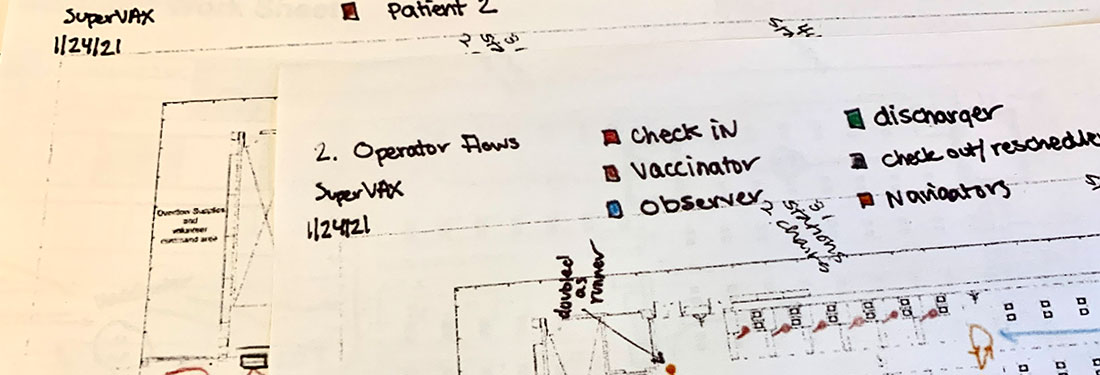Patients Shouldn’t Wait: Enhancing Patient Access with Process Improvement
The fracture clinic at Surrey and Sussex Healthcare NHS Trust (SaSH) struggled with issues of patient access and appointment backlogs for years. The clinic averages a thousand referrals each month from local emergency departments (EDs). Patients discharged from the ED would come to the fracture clinic 2 weeks later for a follow-up — and find a waiting room packed to the gills, appointments often running 1 or 2 hours behind schedule.
Dr. Murali Bhat, a senior orthopedic surgeon at the clinic, made a crucial discovery while trying to address these problems: more than half of the clinic’s ED referrals didn’t actually require an in-person follow-up. He and fellow staff were struggling to keep up with appointments that weren’t necessary. And a majority of their patients were giving up hours of their lives for no reason.
So Dr. Bhat and his team devised a way to screen ED referrals ahead of time and send injury-specific standardized care plans in place of an in-person office visit. The new process had immediate impact:
- Sixty-one percent of all ED referrals were identified as low-risk and required no in-person follow-up, freeing up appointment capacity for patients who required more in-depth care.
- All patients are contacted within 72 hours after leaving the ED, either with a remote care plan or information about an appointment at the clinic. Tests and other recommendations for patients coming to the clinic are outlined in advance so that patients know what to expect and staff can plan for and treat them efficiently.
- Follow-up patients needing an operation are now seen within 1 to 3 days of being referred, rather than 1 to 4 weeks.
- The clinic became so efficient that primary care providers are now able to send urgent referrals through the emergency channel, rather than adding them to the elective backlog as they did before.
Dr. Bhat used strategies like standardization and daily management to make these improvements. These strategies can benefit other organizations as well, whether problems with access are caused by unnecessary appointments or other factors, such as onerous administrative steps or room and instrument setup. By identifying and redesigning these factors, teams can improve their patients’ satisfaction, lower their own burden of work and subsequent stress, and increase capacity and revenue without increasing resources.
The benefits at SaSH are visible every day. “You come to the waiting room now, and it’s nearly empty,” Dr. Bhat says. “The referrals have gone up, but we’ve removed the obstacles.”
Access and backlogs: A pandemic in their own right
Seeing patients in a timely fashion is a longstanding challenge. The waves of illness and disruptions to care caused by COVID-19 make the challenge more intense now than ever.
A study published in the Journal of Bone and Joint Surgery predicts that, by summer 2022, orthopedic surgeons in the U.S. will face a backlog of more than 1 million cases. In the U.K., the pressure is even greater: The number of patients waiting for elective care has grown to the highest level seen in the last 10 years, reaching 5.61 million.
Looking at access from the patient’s perspective
Solving problems with access and backlogs starts with a new perspective.
You have to get your head out of the status quo, and that means putting yourself in the shoes of the patient. What actions must a patient take in order to access care? What is being asked of them? Is it what they even wanted or needed in the first place?
Questions like these are what led Dr. Bhat to his breakthrough at the virtual fracture clinic. He realized that most patients referred from the ED had a high-burden journey ending in a very low-value consultation: after waiting excessively, all they got in return was a few simple instructions from an overwhelmed provider. Clearly, the process had to change.
3 ways to improve access: Lessons from SaSH
Dr. Bhat and dozens of leaders at SaSH took Virginia Mason Institute’s Lean for Leaders training as part of the organization’s work to unite all staff behind a single system of improvement and management.
Based on what he learned and practiced during the course, Dr. Bhat tested and implemented several innovations, both in the virtual fracture clinic and the hand-injury clinic he leads once a week. Below are three of the most significant.
Remote vetting in advance
Dr. Bhat or other senior doctors in the fracture clinic now personally review all referrals from the ED. Based on X-rays and notes, they either recommend a follow-up appointment or discharge the patient with ready-made care instructions.
This new protocol applies the “just-in-time” philosophy that aligns the needs of the patient with exactly the resources required to deliver the care they seek: just what is needed, in just the required amount, at the right time, and at the right place.
In addition to being more efficient than before, the process is also more rigorous, because a senior doctor signs off on every case.
Standardizing care plans
The ready-made instructions sent by doctors are based on clinical standards of care and catalogued in the software system used by the team. For Dr. Bhat, it takes under a minute to review a case, select a care plan, and complete a discharge.
By standardizing the process with templates, the team has been able to discharge thousands of patients with near-zero errors. They follow a method of “mistake-proofing” that ensures staff can quickly deliver the best practice known to date, relying less on sheer memory to recall clinical recommendations. And it affords clinicians more time and autonomy to undertake more complex patient cases.
For the patient, satisfaction is now much higher — dispelling the notion that patients always prefer a high-touch experience. The fracture clinic also collected data showing that patients retain more information this way.
“All we do is type in a few codes, and the patient gets more from us than they would by coming to the office,” Dr. Bhat says.
Daily management
In his weekly hand clinic, Dr. Bhat found himself bogged down by administrative work. Not only was this personally frustrating, but it also took time and energy away from his high-value role in counseling patients. Through the concepts of 5S and setup reduction, his team worked to improve what was necessary and unnecessary in a clinic visit and clarified roles and responsibilities to improve skill-task alignment, making the patient appointment more efficient and effective for both the patient and the clinical team.
Now he delegates many tasks to others on his team — and sustains quality through daily management behaviors like daily huddles. For example, for the dozen or so patients Dr. Bhat personally sees on clinic days, a physiotherapist or other team member does the initial work of “rooming in” and gathering information. When Dr. Bhat comes in, the team member provides a summary and gives their recommendation to him. If he disagrees, he provides real-time coaching that will help the team member next time. If he concurs, the patient gets the expert care they need, and Dr. Bhat can move on to the next one.
Watch the On-Demand Webinar
Addressing the Backlogs Crisis: Increasing Access and Throughput with a Unified Improvement Approach
Learn more about how to address backlogs and increase access by watching the on-demand webinar featuring Dr. Bhat and our expert Melissa Lin.





